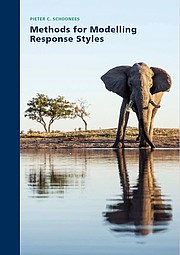Methods for Modelling Response Styles Defended on Tuesday, 15 December 2015
Ratings scales are ubiquitous in empirical research, especially in the social sciences, where they are used for measuring abstract concepts such as opinion or attitude. Survey questions typically employ rating scales, for example when persons are asked to self-report their perceptions of films or their job satisfaction. Yet, using a rating scale is subjective. Some persons may use only the middle of the rating scale, whilst others choose to use only the extremes. Consequently, persons with the same opinion may very well answer the same survey question using different ratings. This leads to the response style problem: How can we take into account that different ratings can potentially have different meanings to different persons when analysing such data?
This dissertation makes methodological and empirical contributions towards modelling rating scale data while accounting for such differences in response styles. The general approach is to identify individuals in the data which exhibit similar response styles, and to extract substantive information only within such groups. These elements naturally lead to the synthesis of cluster analysis and dimensionality reduction methods. In order to identify these response styles, responses to multiple survey questions are used to assess within-subject rating scale usage. Both non-parametric and parametric approaches are formulated and studied, and accompanying open-source software implementations are made available. The added value of using the developed algorithms is illustrated by applying these to empirical data. Applications range from sensometrics and brand studies, to psychology and political science.
Keywords
response style; rating scale; cluster analysis; segmentation; dimensionality reduction; regularization; statistical modelling; human values; item response theory; biplots.












